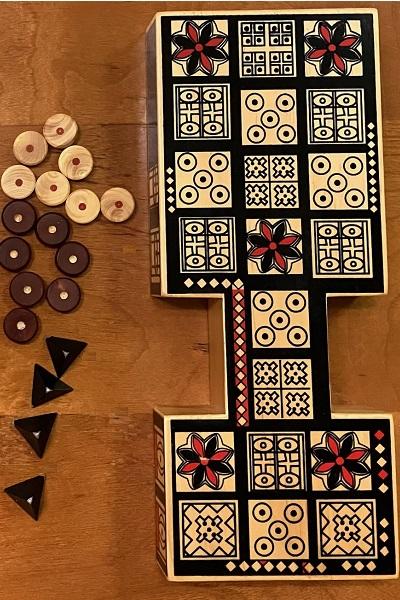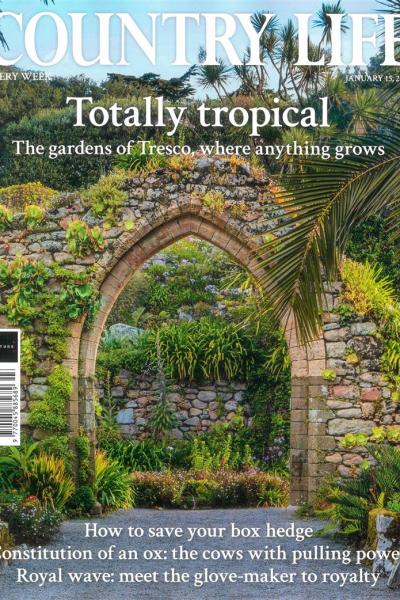
Outsider art is an awkward label. There have been others: art brut, self-taught art, folk art, raw art, visionary art, naïve art, grass roots art, marginal art, intuitive art. And while all these terms refer to slightly different things, they all describe art made by self-taught artists from outside the art world. As you might imagine, there are any number of reasons why an artist would be deemed as being outside the art world - disability, reclusion, religious or spiritual fervor are a few common ones. Personally I am much more drawn to these types of artists than their counterparts inside the art world. So lucky for me the Mechanics' Institute Library has a good amount of books on the topic...here are my ten favorites.
Groundwaters : a century of art by self-taught and outsider artists / Charles Russell. (709.04 R961)
This book shares the works and stories of 12 of the most remarkable self-taught artists from the last century - names like Adolf Wölfli, Madge Gill, Martin Ramirez, Nek Chand, Howard Finster. The author also delves into the changing ways in which the greater art world has viewed these "outsiders" and their art. This book is loaded with beautiful color pictures, and is probably the best overview on the topic in the library.
Fantasy worlds / edited by Angelika Taschen (729 M232)
My favorite part of the outsider art world are the physical environments. Typically called "visionary art environments" these are fantastical and eccentric architectural or sculpture sites, usually built by hand over the course of years or decades. If you’ve ever been to Southern California's Salvation Mountain or Watts Towers then you'll know what I mean. This book shares some of the world's most famous "visionary art" sites, such as France’s Le Jardin Zoologique, Laos' Buddha Park Garden, or Detroit's Heidelberg Project.
Spiritual American trash : portraits from the margins of art and faith / Greg Bottoms (709.22 B751)
This book paints creative profiles of the lives and works of eight of America's most important outsider artists, all of whom were driven by their spirituality, untrained and worked with scavenged materials. A few favorites: a government custodian who built a gilded throne (coated in foil from discarded wine bottles) for the soon-to-be-returning Jesus, a depressed Sunday school teacher who created thousands of sculptures from driftwood and cement and arranged them as biblical scenes crammed into her Outer Banks home, an elderly woman who built a 16 building "ranch" out of bottles taken from the nearby dump, and a man who after having a vision spent the next 30 years of his life building a monument to native peoples out of cement, cars, and "white man's trash".
Henry Darger, throwaway boy : the tragic life of an outsider artist / Jim Elledge (700.92 D217e)
Henry Darger was a recluse who posthumously became one of America's most celebrated outsider artists. When not at his custodial job he was at work on his 15,145 page master work called "In the Realms of the Unreal" complete with hundreds of panoramic watercolor paintings. In addition to this biography on Darger we also have the more image heavy Henry Darger : art and selected writings, as well as the documentary film on his life and art called In the realms of the unreal. John Asbury also wrote the book length poem Girls on the run inspired by Darger's work.
The discovery of the art of the insane / John M. MacGregor (616.89 M14)
Originally written as a doctoral thesis in the late 1970s, this is a difficult but important book in the history of self-taught and outsider art. With training in both art history and in psychiatry the author goes back several centuries to look at the changes in attitude toward art by those with mental illness, from both the art and medical worlds. For another very important book from the same era see Roger Cardinal's Outsider Art, which is credited with coining the term "outsider art".
Revelations : art from the African American South / Timothy Anglin Burgard (704.0396 R449)
This is the catalog for the remarkable exhibition still on display at the DeYoung Museum, which collects artwork from the African American south from late 19th and early 20th century. Most of the artists featured are untrained and the works range in subject and medium: colorful quilts, intricate sculptures, expressive paintings, pencil drawings, and found object assemblages. The book also features artist biographies and interviews with several of the most prolific artists: Thornton Dial, Lonnie Holley, and Joe Minter.
The Electric Pencil : drawings from inside State Hospital No. 3 / James Edward Deeds Jr. (740.92 D311)
James Edward Deeds Jr. spent most of his adult life at State Hospital No. 3 in Nevada, Missouri. On the hospital's ledger paper Deeds drew hundreds of colorful pictures of people, animals and machines, which he eventually presented to his mother, hand sewn and bound in a leather portfolio. The portfolio was later found in the garbage by a 14-year-old boy who decades later sold it to an art collector who released this book.
The hidden art : 20th- & 21st-century self-taught artists from the Audrey B. Heckler collection (700.411 R864)
Audrey B. Heckler has amassed an incredible collection of outsider artwork from around the world, and this book shows it off. It's a great overview of some of the most famous self-taught artists from the 20th century, as well as a handful of artists working today.
Create / Lawrence Rinder with Matthew Higgs (709.7946 R579)
If you've never been to Creativity Explored in the Mission District, Creative Growth in Oakland, or NIAD Art Center in the city of Richmond then you are missing out on some of the area's most incredible artistic centers and institutions. These organizations provide those with disabilities a place to create, share and sell their artists creations. This book collects work from twenty Bay Area artists who belong to these centers and was released with an exhibition held several years back at the Berkeley Art Museum.
Metamorphosis : the fiber art of Judith Scott : the outsider artist and the experience of Down's syndrome / John M. MacGregor (706 S427)
Judith Scott was born with Down Syndrome and was unable to hear or speak for most of her life. In the late 1980s her sister enrolled her at Oakland's Creative Growth art center, where she developed an interest in fiber arts. Scott would take random objects such as branches, poles, Styrofoam pieces, and even floor fans and wrap them with colorful yarns, threads, and linen to make massive fiber sculptures unlike any you've likely seen. After her first exhibition and the release of this book in 1999, she began to receive international acclaim and her art has been sent for exhibition across the world.



